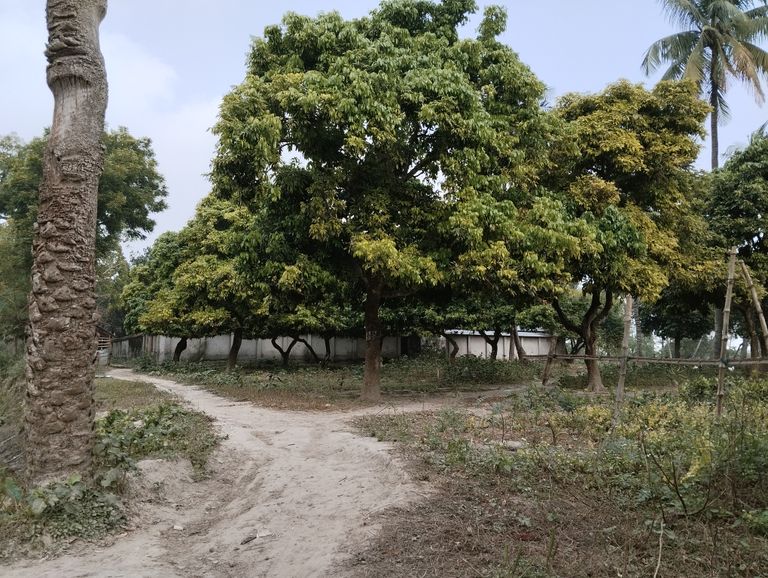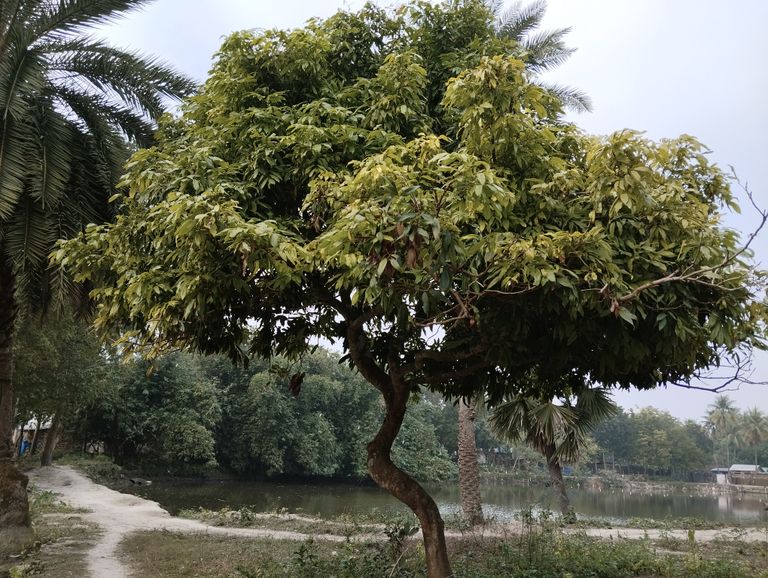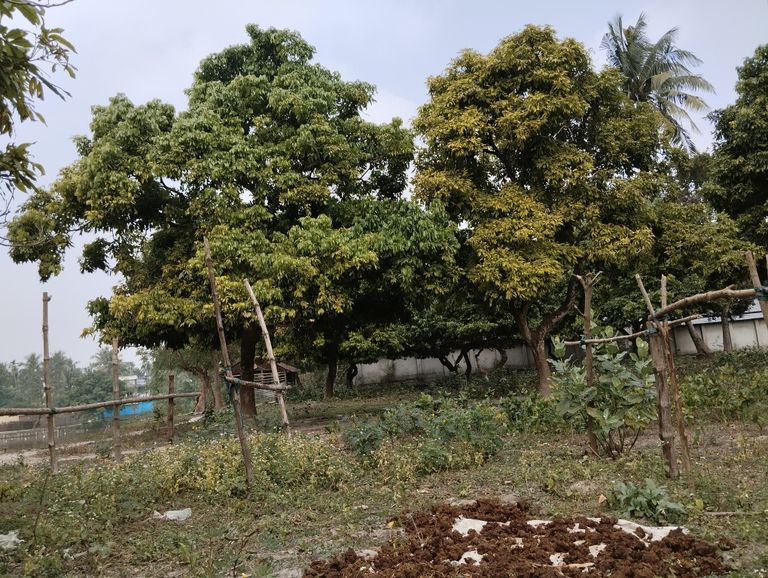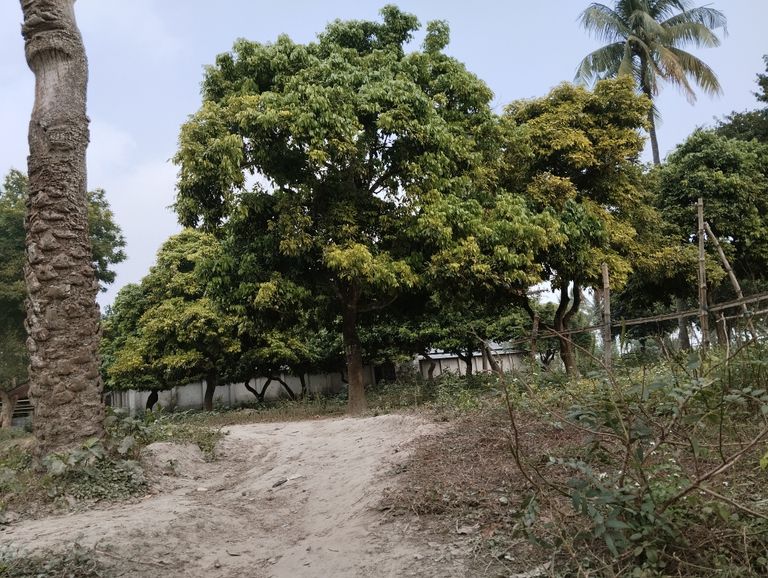
Litchi Orchard A Sweet Symphony of Nature.
When it comes to the exotic treasures of nature, a litchi orchard stands out as a delightful haven of beauty and abundance. Litchis, with their juicy sweetness and vibrant red hue, are not only a feast for the taste buds but also a sight to behold when they ripen in clusters on the trees. Let us explore the enchanting charm of a litchi orchard, the process of nurturing these trees, and the joy they bring to both farmers and visitors.
The Magical World of Litchi Orchards
A litchi orchard is a sprawling area of lush greenery, where rows of majestic litchi trees stretch as far as the eye can see. These trees, belonging to the soapberry family (Sapindaceae), are native to the subtropical regions of Asia and thrive in warm, humid climates. The sight of litchi trees in full bloom, adorned with fragrant flowers, is a harbinger of the delicious fruits to come.
When the fruits begin to ripen, the orchard transforms into a vibrant mosaic of red and green. Each tree becomes a living work of art, its branches weighed down by the clusters of litchis, which resemble tiny jewels encased in a delicate, textured shell.
Cultivating Litchi Trees: A Labor of Love
Growing litchi trees requires patience, dedication, and an understanding of their specific needs. These trees prefer well-drained, fertile soil and need ample sunlight for optimal growth. The cultivation process begins with the selection of high-quality seeds or grafted saplings, which are carefully planted and nurtured.
The trees need regular irrigation, especially during the flowering and fruiting stages. Farmers often employ organic farming methods, using compost and natural fertilizers to enrich the soil. Pest management is another crucial aspect, as litchi trees are susceptible to pests like fruit borers and mites.
Pruning the trees to maintain their shape and remove dead branches ensures better air circulation and sunlight penetration, which contributes to healthier fruit production. It takes several years for a litchi tree to mature and bear fruit, but the rewards are well worth the wait.
Harvesting: A Celebration of Abundance
The harvesting season is the most awaited time for litchi farmers. Typically, litchis ripen during the late spring to early summer months, depending on the region. The fruits are hand-picked to ensure their delicate skin remains intact.
Harvesting is often accompanied by a festive spirit, as it marks the culmination of months of hard work. Families, workers, and even visitors join in the activity, enjoying the sweet aroma of ripe litchis and savoring freshly plucked fruits straight from the tree.
The Allure of Litchi Orchards for Visitors
Litchi orchards have become popular destinations for nature lovers, photographers, and tourists. Walking through an orchard is a sensory experience, where the sights, sounds, and scents of nature create a calming effect on the mind and soul.
Many orchards offer guided tours, allowing visitors to learn about the cultivation process and the history of litchi farming in the region. Some even host fruit-picking events, where guests can pluck their own litchis and relish their sweet, juicy goodness.
Litchis in Culinary Delights
Litchis are not only enjoyed fresh but also find their way into various culinary creations. From litchi ice creams and sorbets to cocktails, jams, and desserts, the fruit adds a touch of sweetness and sophistication to any dish. Its health benefits, including being rich in Vitamin C, antioxidants, and minerals, further enhance its appeal.
The Economic and Cultural Significance
For many regions, litchi farming is a vital source of livelihood. Countries like China, India, Thailand, and Vietnam are major producers of litchis, with the fruit being an essential part of their agricultural economy.
In addition to its economic importance, the litchi holds cultural significance. In some communities, the fruit symbolizes prosperity and happiness and is often featured in traditional festivals and celebrations.
Preserving the Legacy of Litchi Orchards
As urbanization and climate change pose challenges to traditional farming practices, it is essential to protect and promote litchi orchards. Efforts to conserve these orchards include adopting sustainable farming methods, promoting agrotourism, and educating the younger generation about their ecological and economic value.
A litchi orchard is more than just a place where fruits grow; it is a testament to the harmony between humans and nature. The sweet taste of a litchi, fresh from the tree, carries with it the essence of the land, the effort of the farmers, and the magic of nature’s bounty. Visiting a litchi orchard is an experience that lingers in the memory, a celebration of life’s simple yet profound pleasures.


Effective Management of Litchi Orchards with Bi-Spray Technique
Litchi (Litchi chinensis) is a tropical and subtropical fruit tree that holds a special place in global fruit markets for its sweet flavor and exotic aroma. However, successful litchi farming requires meticulous care to ensure a healthy yield. One of the most effective management practices in litchi cultivation is the use of bi-spray (20 sprays), a systematic approach to pest and disease management, growth regulation, and fruit quality improvement.
In this blog, we’ll discuss the importance of the bi-spray method in litchi farming, its benefits, and the detailed schedule for applying these sprays throughout the crop cycle.
Importance of Bi-Spray in Litchi Orchards
Litchi trees are susceptible to various pests, diseases, and environmental stresses, which can significantly affect their growth and productivity. The bi-spray method provides a structured plan for spraying essential nutrients, pesticides, fungicides, and plant growth regulators at different stages of the litchi growth cycle. This method ensures:
- Improved Plant Health: By preventing pest infestations and diseases.
- Enhanced Fruit Quality: Ensuring better size, color, and sweetness of litchis.
- Increased Yield: Reducing crop loss due to pests and environmental stress.
- Sustainable Farming: Promoting the judicious use of chemicals, ensuring environmental safety.
Bi-Spray Schedule for Litchi Orchards
The bi-spray method involves 20 well-planned sprays throughout the growing season. Each spray targets specific growth stages, ensuring optimal results.
- Pre-Flowering Stage (Sprays 1-5):
Objective: Strengthening plant immunity and preparing for flowering.
Spray Composition:
First Spray: Bordeaux mixture (1%) or copper-based fungicides to prevent fungal infections.
Second Spray: Neem oil (2%) to deter pests naturally.
Third Spray: Micronutrient solution (zinc and boron) to improve flower initiation.
Fourth Spray: Insecticide targeting aphids and mites.
Fifth Spray: Potassium nitrate to enhance bud formation.
- Flowering Stage (Sprays 6-10):
Objective: Ensuring pollination success and disease control.
Spray Composition:
Sixth Spray: Sulfur-based fungicides to control powdery mildew.
Seventh Spray: Bee-friendly insecticides to protect pollinators.
Eighth Spray: Foliar spray of calcium nitrate for flower strength.
Ninth Spray: Fungicide to control flower blight.
Tenth Spray: Potassium-based solutions to aid pollination.
- Fruit Development Stage (Sprays 11-15):
Objective: Protecting developing fruits from pests and improving size and sweetness.
Spray Composition:
Eleventh Spray: Pesticides targeting fruit borers.
Twelfth Spray: Organic solutions like neem extract to ensure fruit safety.
Thirteenth Spray: Magnesium sulfate to promote fruit size.
Fourteenth Spray: Fungicide to control anthracnose.
Fifteenth Spray: Potassium and phosphorus-rich solutions for sweetness enhancement.
- Harvesting Stage (Sprays 16-20):
Objective: Maintaining fruit quality and preparing trees for the next cycle.
Spray Composition:
Sixteenth Spray: Calcium nitrate to improve fruit firmness.
Seventeenth Spray: Antioxidant sprays to delay fruit aging.
Eighteenth Spray: Neem-based solutions to deter late-season pests.
Nineteenth Spray: Mild fungicides to prevent storage rots.
Twentieth Spray: Foliar nutrient sprays to replenish tree reserves for the next season.
Benefits of Bi-Spray Technique
- Higher Yield: Farmers report a 15-30% increase in yield due to reduced crop loss and improved plant vigor.
- Better Market Value: Litchis produced under the bi-spray regimen often fetch higher prices for their uniform size and superior sweetness.
- Environmental Sustainability: The integration of organic and chemical sprays minimizes environmental impact.
- Cost-Effectiveness: Systematic sprays reduce unnecessary chemical usage, lowering production costs.
Tips for Implementing Bi-Spray
- Timing is Crucial: Ensure that sprays are applied at the recommended stages for maximum effectiveness.
- Proper Dosage: Follow manufacturer guidelines to avoid under- or over-application.
- Weather Monitoring: Avoid spraying during windy or rainy conditions.
- Use Protective Gear: Farmers should wear protective equipment while spraying to ensure personal safety.
The bi-spray technique in litchi orchards is a game-changer for modern litchi cultivation. By addressing the specific needs of the plant at different stages, this approach not only boosts productivity but also ensures premium fruit quality. For litchi growers aiming for sustainable and profitable farming, adopting the bi-spray regimen can be a transformative step.
With meticulous implementation and adherence to guidelines, litchi farmers can maximize their yields and contribute to the growing demand for high-quality litchis worldwide.

Causes of Rotting in Lychee
Lychee (Litchi chinensis) is a tropical fruit widely loved for its sweet and juicy taste. However, one common issue with lychee is fruit rot, which can significantly impact its quality, shelf life, and market value. Below, we’ll explore the primary causes of rotting in lychee, focusing on biological, environmental, and post-harvest factors.
- Fungal Infections
One of the most common reasons for lychee fruit rot is fungal infections. Several fungal pathogens affect lychee, including Colletotrichum, Phytophthora, and Botryodiplodia. These fungi thrive in warm, humid conditions and can attack the fruit during different stages of its growth or after harvest.
Anthracnose caused by Colletotrichum leads to brown spots that gradually spread, causing rot.
Phytophthora causes water-soaked lesions and rapid decay, especially during wet weather.
- Bacterial Infections
Bacteria can also contribute to lychee rot, although they are less common than fungi. Bacterial infections usually occur when the fruit skin is damaged, allowing pathogens to enter.
Erwinia species are known to cause soft rot, turning the flesh mushy and emitting a foul odor.
- Environmental Conditions
Lychee is highly sensitive to environmental conditions, which can promote fruit rot:
High Humidity: Excessive humidity provides the perfect environment for fungal and bacterial growth.
Rainfall: Frequent rain during the fruiting season can lead to water accumulation, cracking of the fruit skin, and the development of rot.
Temperature Fluctuations: Rapid changes in temperature can stress the fruit, making it more susceptible to infections.
- Poor Orchard Management
Inadequate orchard practices can increase the risk of fruit rot:
Overcrowded Trees: Poor air circulation in overcrowded orchards promotes high humidity, encouraging the growth of pathogens.
Unpruned Branches: Unmanaged trees with dense foliage create microenvironments ideal for fungal development.
Lack of Pest Control: Pests such as fruit borers and mites can damage the fruit, creating entry points for pathogens.
- Physical Damage to Fruit
Lychee fruit has a delicate skin that can easily get damaged during harvesting, handling, or transportation. Once the skin is bruised or cracked, it becomes highly susceptible to microbial invasion and rapid decay.
- Post-Harvest Issues
Post-harvest handling plays a critical role in preventing rot. Factors that contribute to rotting after harvest include:
Delayed Cooling: Lychee is a highly perishable fruit. Delays in cooling after harvest can accelerate microbial growth.
Improper Storage: Storing lychee at room temperature or in non-ventilated containers can lead to moisture accumulation, creating conditions favorable for rot.
Lack of Hygiene: Contaminated tools or storage areas can introduce pathogens to the fruit.
- Nutritional Deficiencies
Lychee trees require a balanced supply of nutrients for healthy growth. Deficiencies in essential nutrients like calcium and potassium can weaken the fruit's skin, making it more prone to cracking and infections.
- Insect Infestations
Insects such as fruit flies and lychee stink bugs can infest the fruit, causing physical damage and introducing pathogens that lead to rot.
Prevention and Management
Preventing lychee rot requires an integrated approach that combines pre-harvest and post-harvest management practices:
- Good Orchard Practices:
Ensure proper spacing between trees to improve air circulation.
Regularly prune branches to allow sunlight penetration and reduce humidity.
Apply appropriate fungicides and bactericides during the fruiting season to control infections.
- Pest Management:
Monitor and control pests using eco-friendly methods like traps or natural predators.
- Harvesting Techniques:
Use clean, sharp tools for harvesting to minimize physical damage.
Handle fruit gently during picking and packing to prevent bruising.
- Post-Harvest Care:
Cool the fruit immediately after harvest to slow microbial growth.
Store lychee at an optimal temperature of 0-5°C with high humidity (90-95%) to maintain freshness.
Use ventilated containers to reduce moisture buildup during storage and transportation.
- Nutrient Management:
Provide a balanced supply of nutrients, particularly calcium and potassium, to strengthen the fruit's skin.
Rotting in lychee is a multifaceted issue caused by a combination of biological, environmental, and management factors. By adopting proper cultivation, harvesting, and post-harvest practices, it is possible to minimize fruit rot and improve the quality and marketability of lychee. Sustainable farming methods and advanced storage technologies can further enhance the longevity and appeal of this delightful tropical fruit.

Regularly prune branches to allow sunlight penetration and reduce humidity.
Apply appropriate fungicides and bactericides during the fruiting season to control infections.
- Pest Management:
Monitor and control pests using eco-friendly methods like traps or natural predators.
- Harvesting Techniques:
Use clean, sharp tools for harvesting to minimize physical damage.
Handle fruit gently during picking and packing to prevent bruising.
- Post-Harvest Care:
Cool the fruit immediately after harvest to slow microbial growth.
Store lychee at an optimal temperature of 0-5°C with high humidity (90-95%) to maintain freshness.
Use ventilated containers to reduce moisture buildup during storage and transportation.
- Nutrient Management:
Provide a balanced supply of nutrients, particularly calcium and potassium, to strengthen the fruit's skin.
Rotting in lychee is a multifaceted issue caused by a combination of biological, environmental, and management factors. By adopting proper cultivation, harvesting, and post-harvest practices, it is possible to minimize fruit rot and improve the quality and marketability of lychee. Sustainable farming methods and advanced storage technologies can further enhance the longevity and appeal of this delightful tropical fruit.